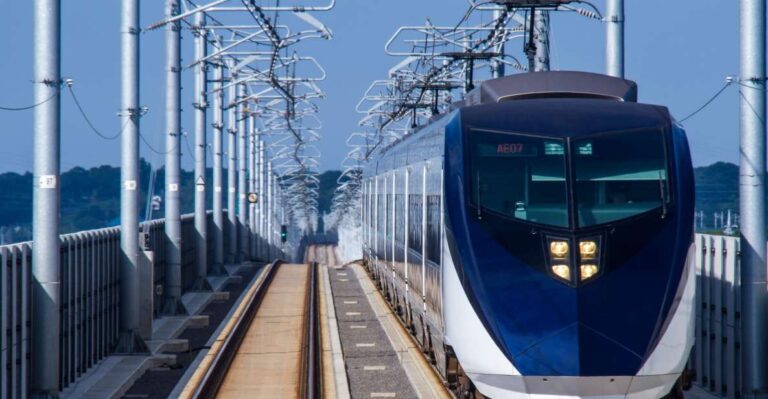The bustling streets of London conceal a hidden world beneath the surface – a vast subterranean network that has captivated the imagination of locals and visitors alike for generations. Explore the secrets of the iconic London Underground on this captivating walking tour, where you’ll uncover the fascinating history and architectural wonders that have shaped this renowned transportation system. From the iconic Victorian stations to the abandoned platforms that whisper of past intrigue, this tour promises to immerse you in the rich cultural heritage that defines the very heart of the city. Prepare to be captivated as you explore the untold stories that lie just below the city streets.
Key Points
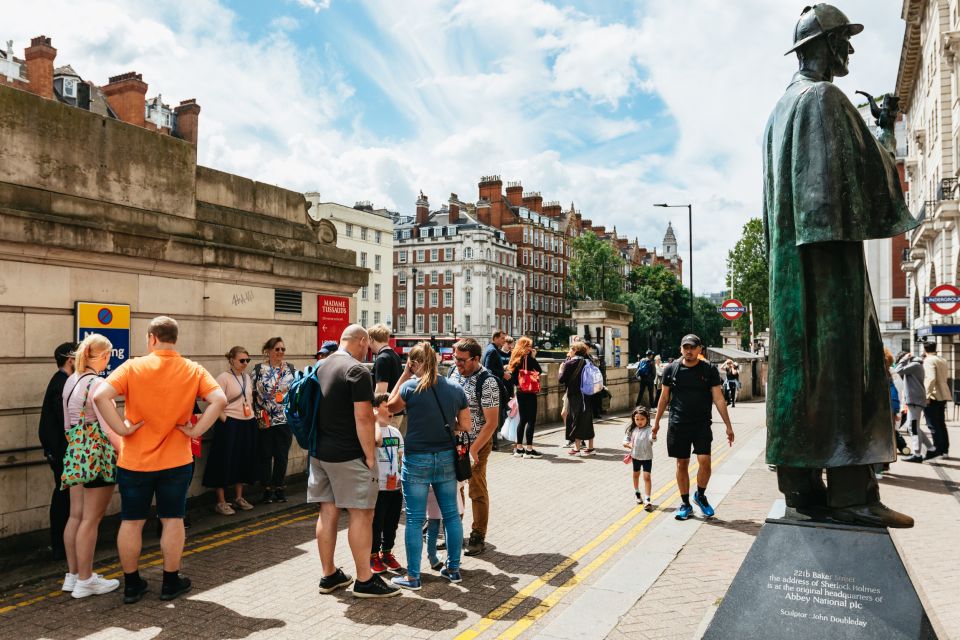
- Explore the iconic Victorian-era architecture and engineering feats that shaped the world’s pioneering underground railway system, the London Underground.
- Discover the Tube’s crucial role as a wartime refuge and strategic command center during the Blitz, with hundreds of thousands sheltering on its platforms.
- Uncover the secrets of abandoned and allegedly haunted Tube stations, where eerie relics and chilling rumors of spectral sightings captivate adventurous travelers.
- Marvel at the diverse architectural evolution of Tube stations, from ornate Victorian elegance to sleek, minimalist designs that blend function and form.
- Navigate the extensive Tube network with ease, utilizing the iconic Tube map and directional signage to seamlessly reach your desired destinations.
Historic Baker Street Station
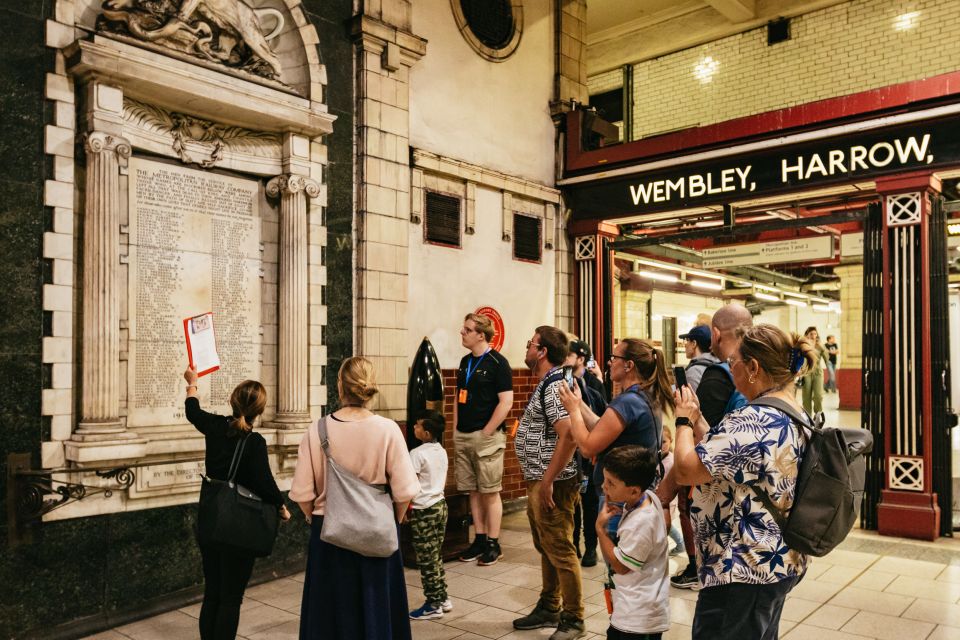
The tour begins at the historic Baker Street Station, which first opened its doors in 1863 as part of the world’s pioneering underground railway system.
On this walking tour, guests will step back in time and discover the station’s rich history. With its stunning Victorian-era architecture and fascinating anecdotes, Baker Street provides the perfect introduction to the London Underground’s captivating past.
Visitors will learn how the station played a crucial role during World War II, serving as a refuge for Londoners seeking shelter from the Blitz.
From its early steam-powered trains to its modern-day commuter lines, Baker Street Station exemplifies the ever-evolving nature of the iconic ‘Tube’ network.
Exploring the Tube’s Origins
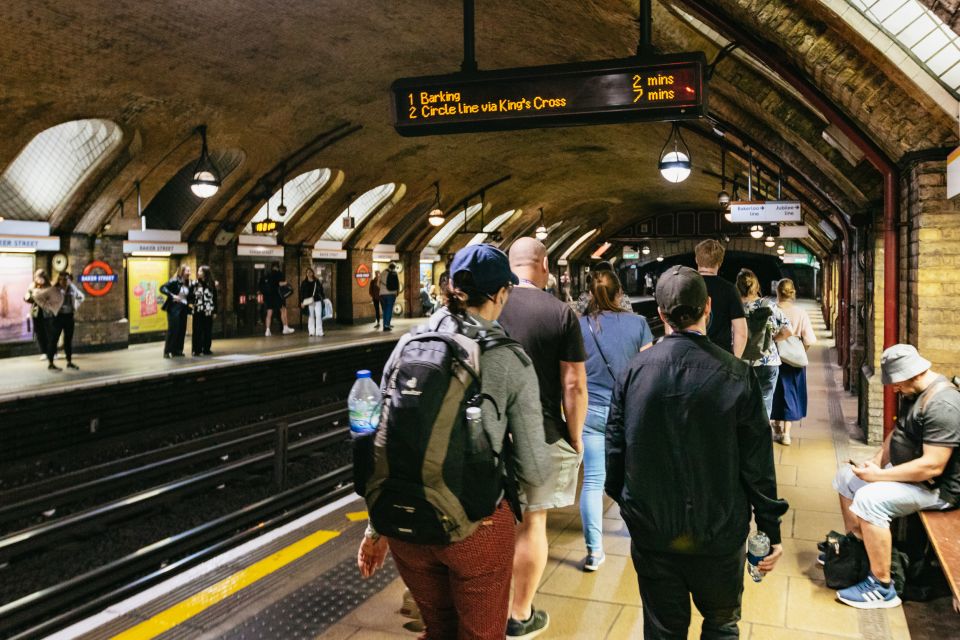
Building upon the rich history of Baker Street Station, the tour explores the origins and evolution of the London Underground, tracing the remarkable journey of this pioneering network. Guests explore the innovative engineering feats and visionary planning that brought the world’s first subterranean railway system to life, marveling at the challenges overcome to construct the Tube’s intricate network of tunnels and stations.
From the introduction of steam-powered locomotives to the eventual transition to electric and diesel-powered trains, the tour illuminates how the Underground has continually adapted to meet the demands of a growing city and its residents.
Key highlights include:
- The groundbreaking construction methods used to build the first section of the Tube.
- The critical role of the Underground in transporting Londoners during the Blitz.
- The ingenious ventilation systems that kept the tunnels breathable.
- The technological advancements that have modernized the Tube over the decades.
Abandoned and Haunted Stations
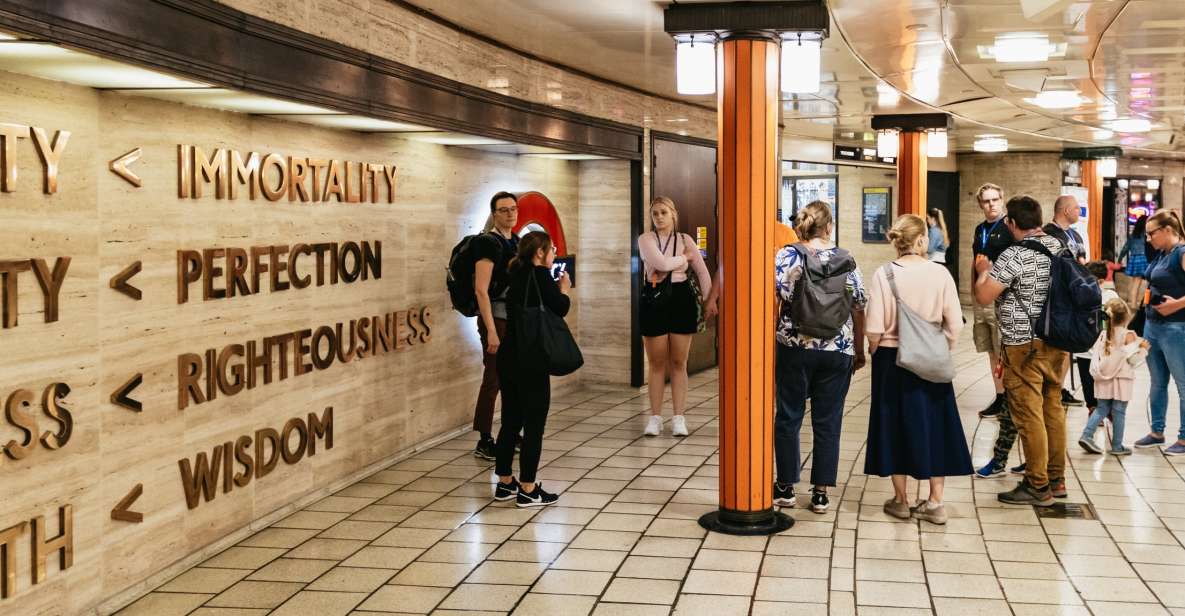
Alongside the bustling Tube stations in operation, the London Underground network also conceals a captivating collection of abandoned and allegedly haunted stations that have captured the imagination of both locals and visitors alike.
Beneath the streets of the city, these eerie and forgotten relics of the past tell a fascinating story of the Tube’s evolution.
Exploring these ghostly stations offers a thrilling glimpse into a bygone era, with their dimly lit platforms, decaying signage, and whispers of long-forgotten passengers.
From the chilling rumors of spectral sightings to the mysterious tales of wartime activities, these abandoned stations invite adventurous travelers to uncover the secrets that lie hidden deep beneath the city streets.
The Tube’s Wartime Roles
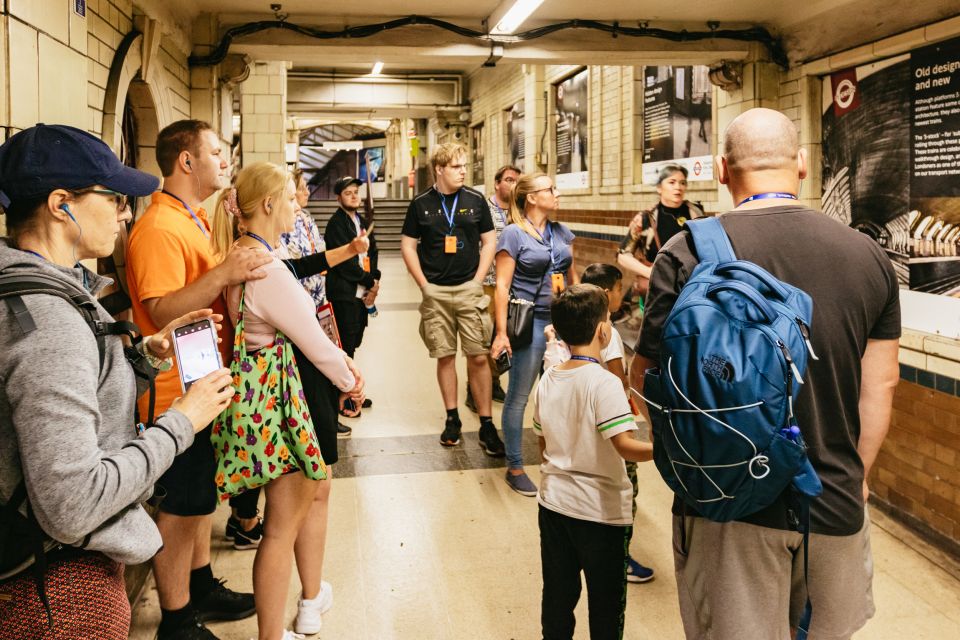
Beyond its role as a public transportation system, the London Underground played a vital part in the city’s wartime efforts, transforming into a network of shelters, factories, and strategic command centers during times of crisis.
During World War II, the Tube stations became a refuge for Londoners seeking safety from the Blitz. Hundreds of thousands of people slept on the platforms, as the tunnels provided protection from the bombing raids above.
Plus, the Underground played host to several wartime industries, including an aircraft factory hidden deep beneath the streets.
The Tube also served as a command center, with government officials coordinating the city’s defense from underground operations rooms.
From shelter to production line, the Tube’s versatility was crucial to London’s survival.
Tube’s Architectural Evolution
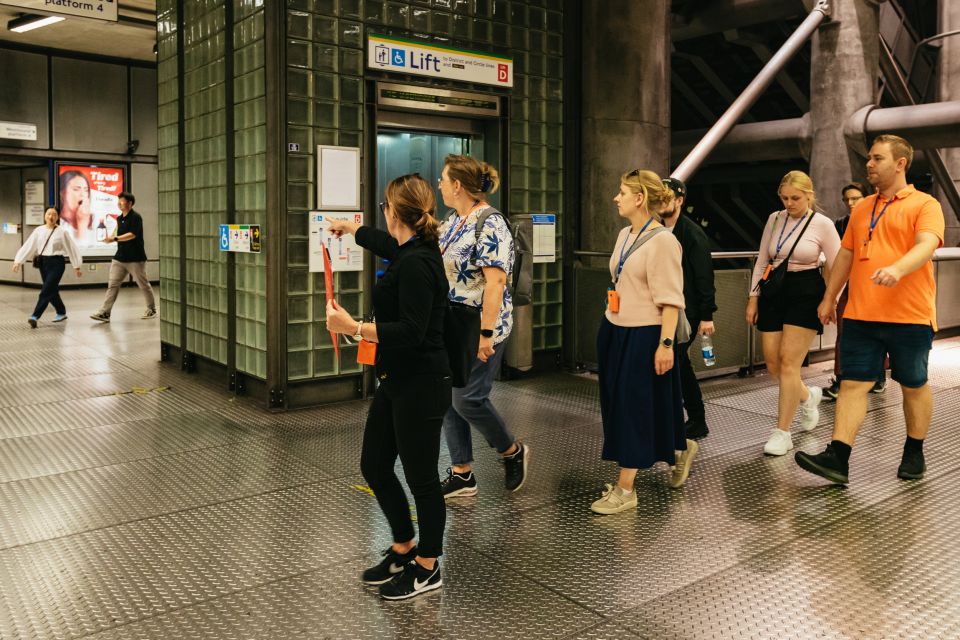
The London Underground has undergone a remarkable architectural transformation over the decades, evolving from its humble 19th-century beginnings to a modern, iconic network that seamlessly blends function and form.
As you explore the Tube’s stations, you’ll be struck by the diverse architectural styles that have emerged, from the ornate, Victorian-era elegance of Baker Street to the sleek, minimalist designs of contemporary stations like King’s Cross.
At every turn, you’ll discover hidden gems like the dazzling, Art Nouveau-inspired tiling at Holborn, or the grand arched ceilings and elegant chandeliers at St. Pancras.
This walking tour offers a captivating glimpse into the Tube’s rich architectural heritage and its evolution as a true icon of London’s urban landscape.
Unique Tube Construction Techniques
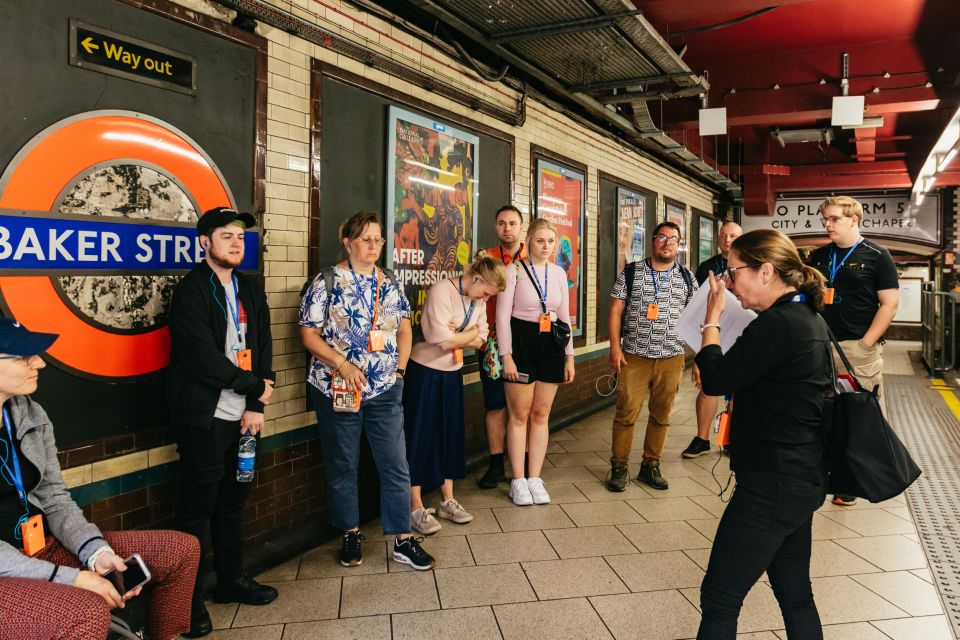
As the London Underground expanded its network, engineers devised innovative construction techniques to navigate the city’s complex underground environment. From the pioneering use of tunneling shields to the development of structural reinforcement methods, each new challenge spurred groundbreaking solutions that helped shape the Tube’s iconic infrastructure.
Some of the unique construction techniques employed include:
- Tunneling Shields: These protective metal casings allowed workers to dig through the dense soil and rock, providing stability and preventing cave-ins.
- Pneumatic Caissons: Pressurized chambers enabled construction below the water table, facilitating the excavation of deep-level tunnels.
- Segment Lining: Curved cast-iron or concrete segments were used to line the tunnels, creating a durable and waterproof structure.
- Underpinning: This technique of supporting and strengthening existing buildings allowed the Tube to be constructed beneath densely populated areas.
Navigating the Tube Network
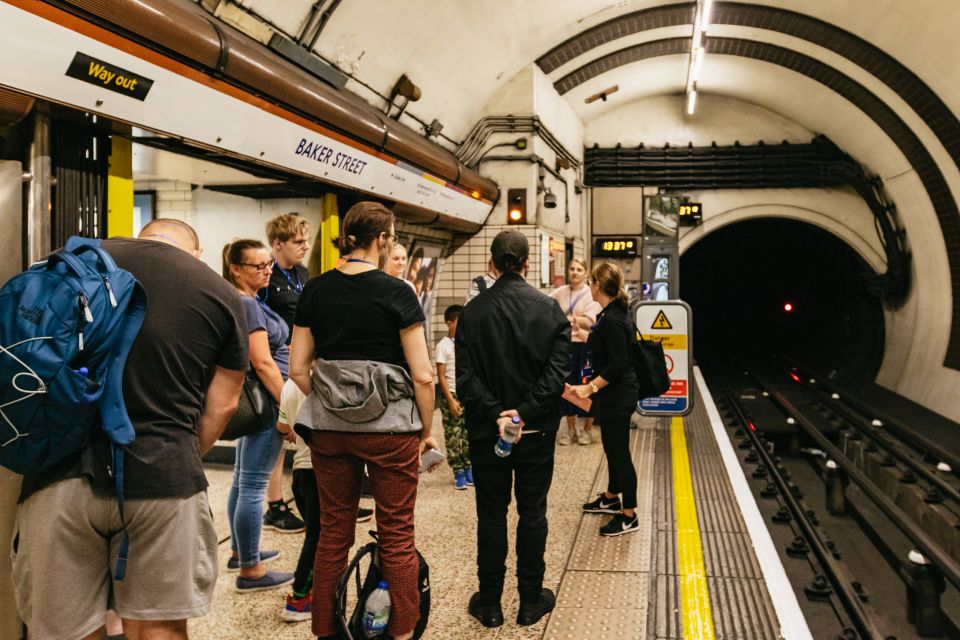
With over 270 stations and 11 color-coded lines, navigating the London Underground can be a daunting task for first-time visitors.
However, a few simple strategies can help travelers seamlessly weave through this vast subterranean network and reach their desired destinations with ease.
First and foremost, familiarize yourself with the Tube map – an iconic graphic that clearly delineates the different lines and their interconnections.
Next, plan your journey in advance using online tools or the official TfL app, which provides real-time updates on service changes and disruptions.
When on the move, pay attention to the clear directional signage and announcements, and don’t hesitate to ask station staff for assistance.
Tour Logistics and Accessibility
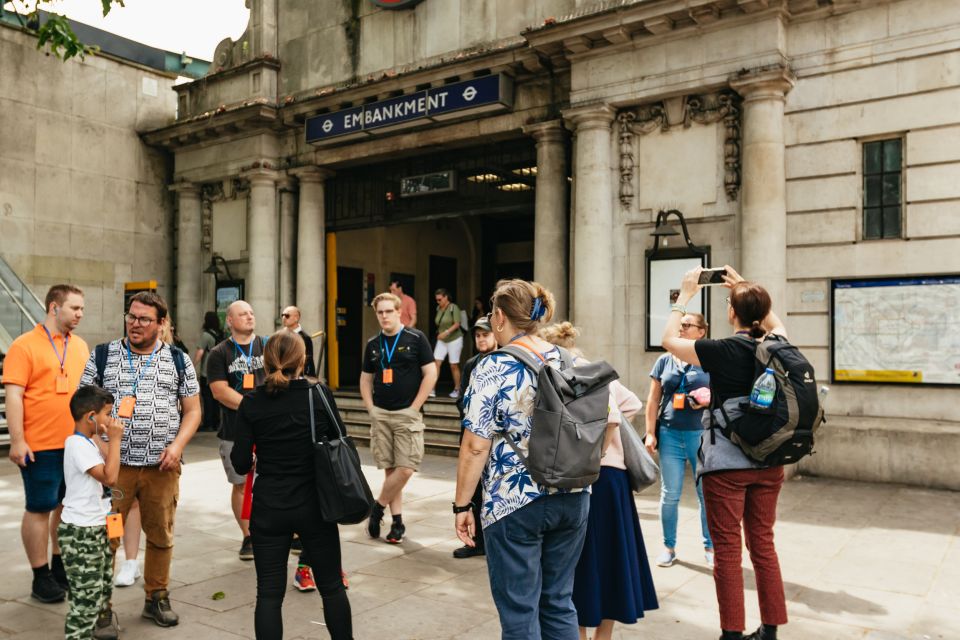
Booking the London Underground walking tour couldn’t be simpler – visitors can either reserve their spot online or opt for the ‘book now, pay later’ option, which offers maximum flexibility. With free cancellation up to 24 hours in advance, this tour is perfect for spontaneous travelers.
The logistics are straightforward: a valid Tube/Oyster card is required, but not included. Although moderate walking is involved, the tour isn’t suitable for those with mobility impairments or wheelchair users.
Highlights of the tour include:
- Explore one of the Tube’s original stations, dating back to 1863.
- Uncover the hidden history and construction of the world’s oldest underground railway.
- Venture into abandoned and potentially haunted stations.
- Learn about the Tube’s diverse roles, from wartime refuge to aircraft factory.
Frequently Asked Questions
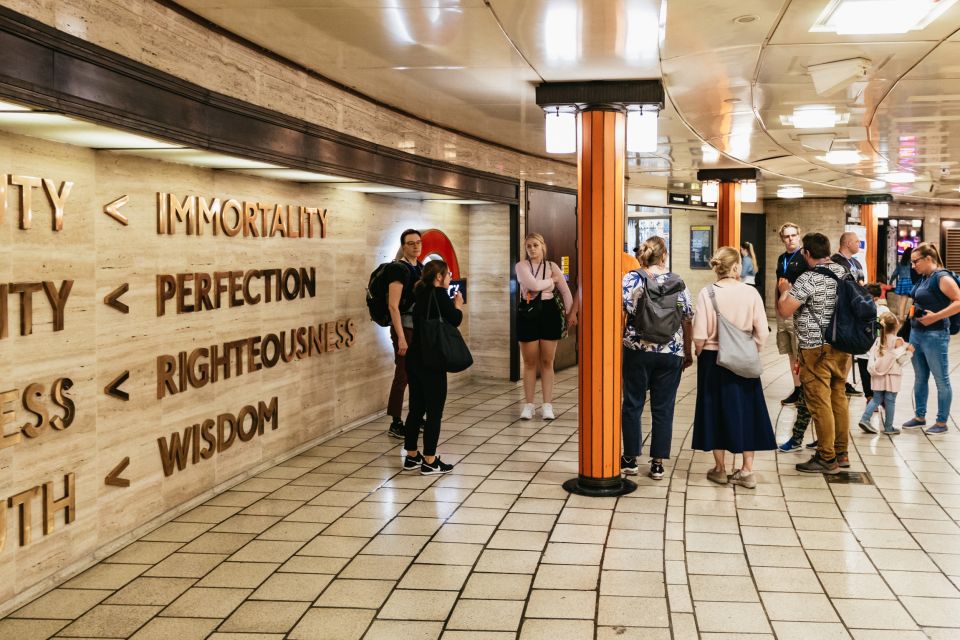
What Is the Group Size for the Tour?
The tour group size is not explicitly stated, but it likely accommodates a small to medium-sized group to allow for an intimate and personalized experience exploring the captivating history and secrets of the iconic London Underground system.
Can Children Participate in the Tour?
Yes, children can participate in the tour! The walking tour is suitable for all ages, offering a fun and engaging way for families to explore the fascinating history of the London Underground. Children are welcome to join the adventure.
Are There Any Age Restrictions for the Tour?
The tour is open to all ages, though it may not be suitable for very young children. Participants must be able to comfortably walk for the duration of the 2.5-hour tour on the London Underground network.
Are Photography and Video Recording Allowed During the Tour?
Photography and video recording are generally allowed during the tour, allowing visitors to capture the fascinating sights and scenes of the iconic London Underground. However, some stations may have restrictions, so it’s best to check with the tour guide beforehand.
How Often Does the Tour Run and at What Times?
The tour runs multiple times per day, with both morning and afternoon options available. Specific departure times may vary, so it’s best to check the schedule when booking to find the most convenient option.
Recap
Unraveling the secrets of the iconic London Underground is a captivating journey through the city’s vibrant history.
From the Tube’s origins as the world’s first underground railway to its crucial wartime roles and architectural evolution, this walking tour offers a unique glimpse into the hidden stories that have shaped this renowned subterranean network.
Enjoy the rich heritage and innovative construction techniques that make the London Underground a true icon of the city.

